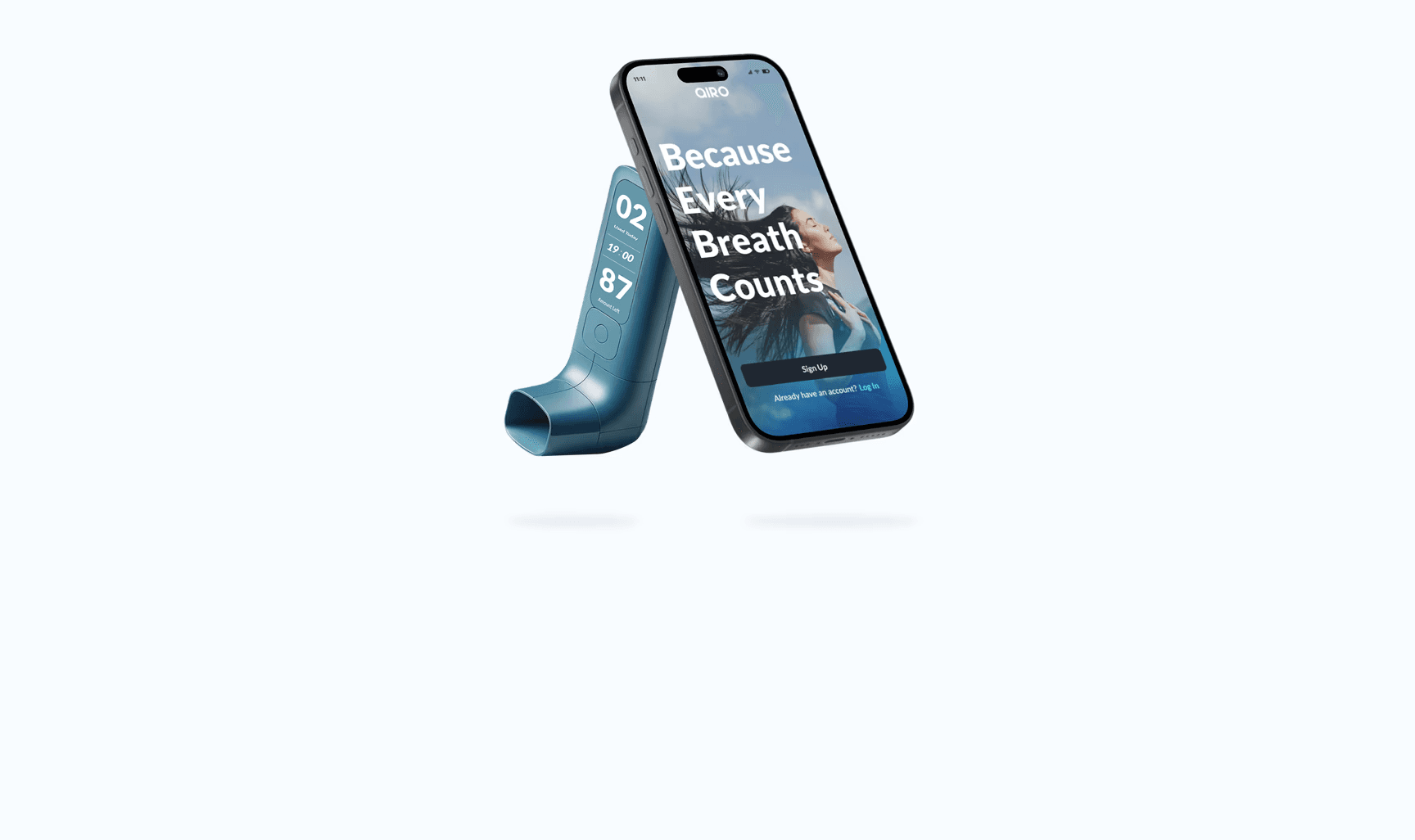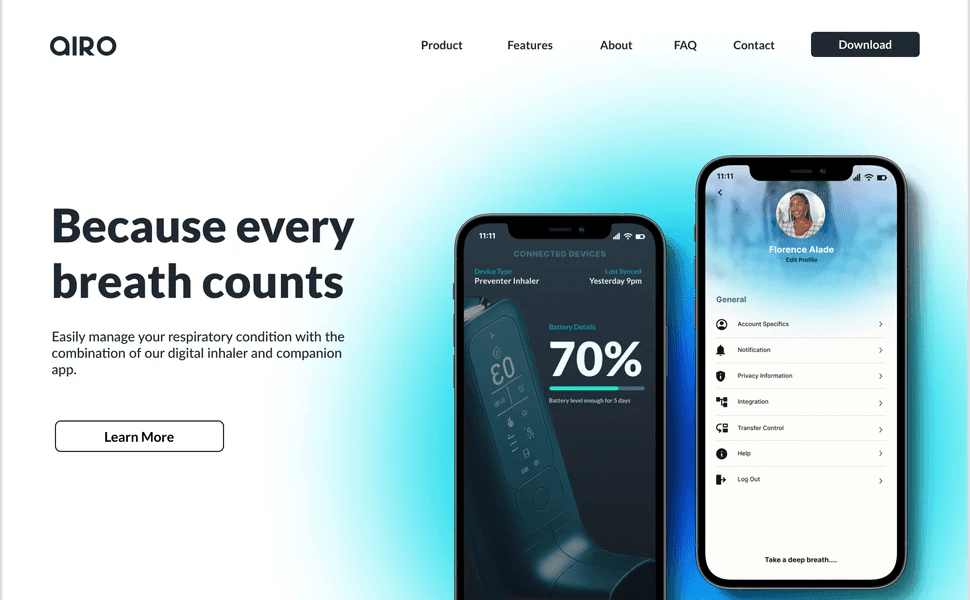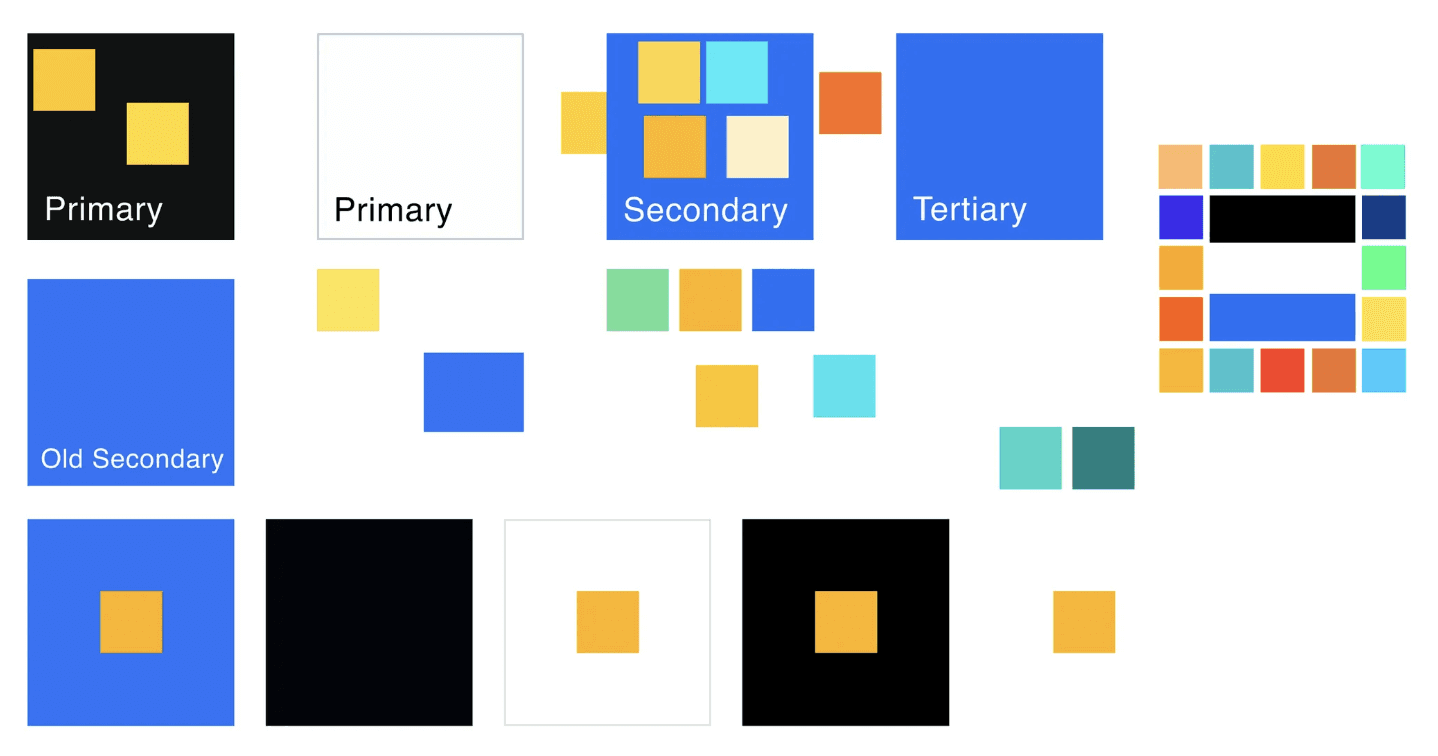
Smart Inhaler & App
Smart Inhaler & App
Smart Inhaler & App
Smart Inhaler & App
View Project →
View Project →
Role
Role
Lead
Lead
Team
Team
Advisors
Advisors
Tools
Tools
Figma
Adobe Creative Suite
Chat GPT, Midjournery, etc
Figma
Adobe Creative Suite
Chat GPT, Midjournery, etc
Skills
Skills
Research & Testing
Branding
3D Modelling
Wireframing & Prototyping
Research & Testing
Branding
3D Modelling
Wireframing & Prototyping
Background
The Problem
Asthma affects over 300 million people worldwide, a number set to reach 400 million in 2025. Managing it means constant attention to triggers, air quality, and inhaler routines. Current tools are scattered across different apps and products, leaving patients overwhelmed rather than supported. As cases rise, innovation hasn’t kept pace, creating a need for a simple, unified solution that puts people back in control of their health.
Problem Statement:
People with asthma face growing challenges but lack a clear, practical way to manage them.

Bright Idea
The Solution
‘Airo’ combines a smart inhaler with a companion app to make asthma management simpler and more effective. The inhaler tracks usage and sends data to the app, which displays key information clearly. Core features include air quality monitoring and integration with wearable devices, creating a more holistic health tool. Designed with user research, surveys, and interviews, Airo focuses on delivering a practical, user-centered solution to the challenges asthmatics face.



Background
The Problem
Asthma affects over 300 million people worldwide, a number set to reach 400 million in 2025. Managing it means constant attention to triggers, air quality, and inhaler routines. Current tools are scattered across different apps and products, leaving patients overwhelmed rather than supported. As cases rise, innovation hasn’t kept pace, creating a need for a simple, unified solution that puts people back in control of their health.
Problem Statement:
People with asthma face growing challenges but lack a clear, practical way to manage them.
Creating Airo
The Process
Airo’s creation began with in-depth research, including analysing studies, competitor analysis, and user surveys. With a clear direction, I designed wireframes, developed prototypes, and conducted usability tests to refine the design.
I also designed a 3D model of the smart inhaler, following a research-led approach.
The journey of building Airo was entirely research-driven and a major learning experience I’m grateful for.
Throughout the project, I relied on both traditional and digital tools. Pen and paper gave me freedom to sketch ideas quickly, while Pinterest and real-world designs provided inspiration. Figma was central for branding and high-fidelity prototypes, with Adobe Illustrator and InDesign supporting brand and report work. Notion helped me document research, track progress, and organize ideas. Together, these tools both new and familiar, were essential in bringing ‘Airo’ to life.

Desk Research & Competitor Analysis
I reviewed existing solutions such as MyAsthma, AsthmaMD, Aflo, Smart Asthma, and Airly. Each offered useful features like symptom tracking, inhaler monitoring, and air quality insights, but many suffered from fragmented experiences, poor design, or limited accessibility. This highlighted an opportunity for Airo to stand out as a unified, user-friendly, and holistic approach to asthma management.
Desk Research & Competitor Analysis
I reviewed existing solutions such as MyAsthma, AsthmaMD, Aflo, Smart Asthma, and Airly. Each offered useful features like symptom tracking, inhaler monitoring, and air quality insights, but many suffered from fragmented experiences, poor design, or limited accessibility. This highlighted an opportunity for Airo to stand out as a unified, user-friendly, and holistic approach to asthma management.




User Interviews, Questionnaires,
I reviewed existing solutions such as MyAsthma, AsthmaMD, Aflo, Smart Asthma, and Airly. Each offered useful features like symptom tracking, inhaler monitoring, and air quality insights, but many suffered from fragmented experiences, poor design, or limited accessibility. This highlighted an opportunity for Airo to stand out as a unified, user-friendly, and holistic approach to asthma management.
User Interviews, Questionnaires,
I reviewed existing solutions such as MyAsthma, AsthmaMD, Aflo, Smart Asthma, and Airly. Each offered useful features like symptom tracking, inhaler monitoring, and air quality insights, but many suffered from fragmented experiences, poor design, or limited accessibility. This highlighted an opportunity for Airo to stand out as a unified, user-friendly, and holistic approach to asthma management.
Sketching, Wireframing & Prototyping
To bring ideas to life, I started simple, sketching on paper and sticky notes to quickly capture concepts and refine them. From there, I moved into wireframing and built out high-fidelity prototypes in Figma, which became the core tool for my design work.


Making The 3D Model
I created a 3D inhaler model from scratch. With no prior 3D experience, I experimented with tools, files, and converters before finally building a version in Autodesk Fusion that included key features like a screen, button, and charging port. The process was challenging but added realism to my project and expanded my skill set.


Sketching, Wireframing & Prototyping
To bring ideas to life, I started simple, sketching on paper and sticky notes to quickly capture concepts and refine them. From there, I moved into wireframing and built out high-fidelity prototypes in Figma, which became the core tool for my design work


Making The 3D Model
I created a 3D inhaler model from scratch. With no prior 3D experience, I experimented with tools, files, and converters before finally building a version in Autodesk Fusion that included key features like a screen, button, and charging port. The process was challenging but added realism to my project and expanded my skill set.
Accessibility
Accessibility was central to Airo’s design, particularly given its use in health contexts. The interface prioritises clarity, large tap targets, and strong visual feedback to support users with varying motor and attention needs. Information is surfaced progressively, with live dose tracking and reminders designed to be clear without overwhelming, helping users build consistent habits safely and confidently.

Outcome
A Final Look
Airo is a project that's really close to my heart, and I'm thrilled with the outcome of it. This passion project has been a huge learning curve for me, boosting my growth as a designer. It's also highlighted the real-world need for a solution like Airo, which is why I'm eager to keep developing it and eventually bring it to life.
